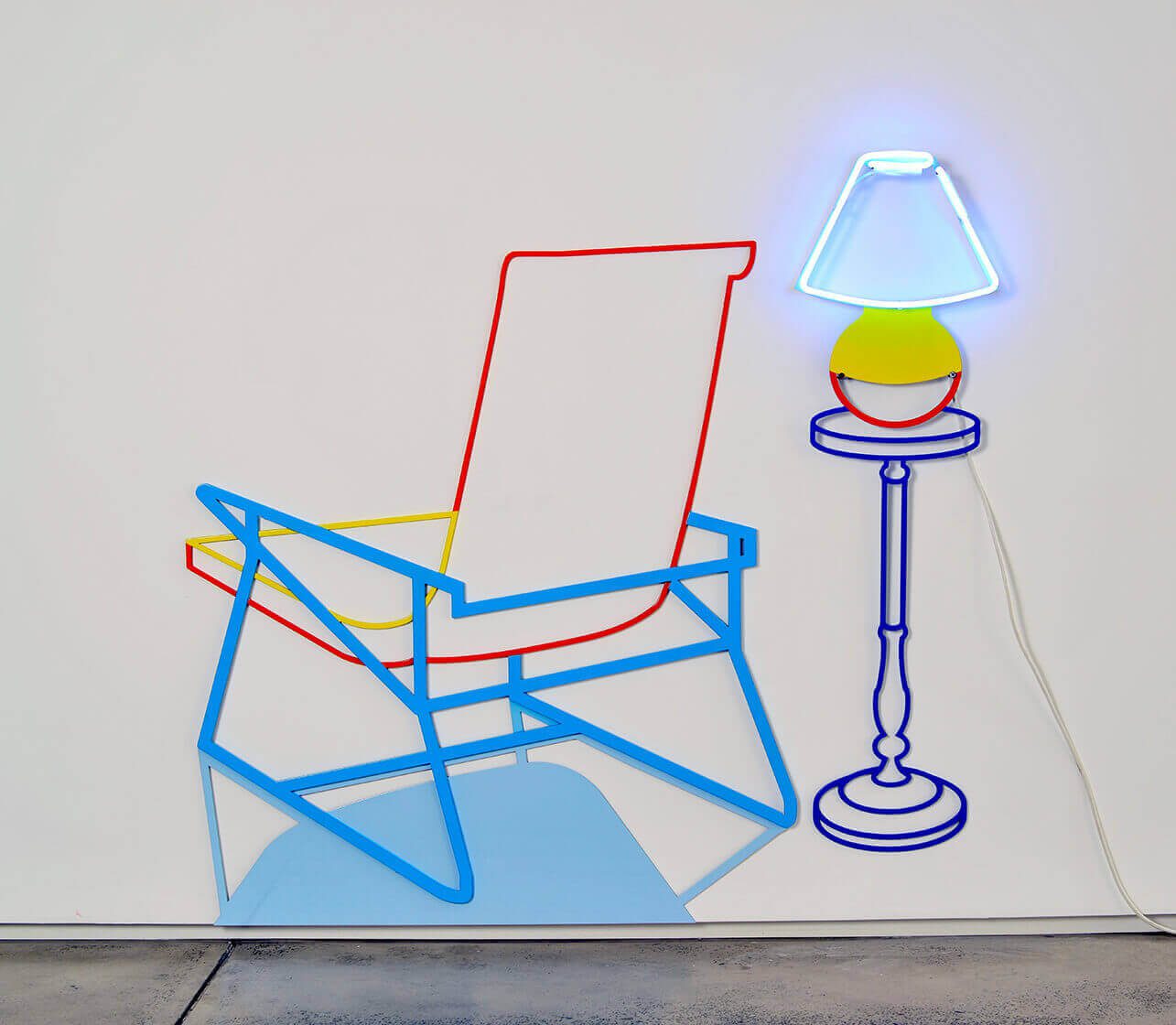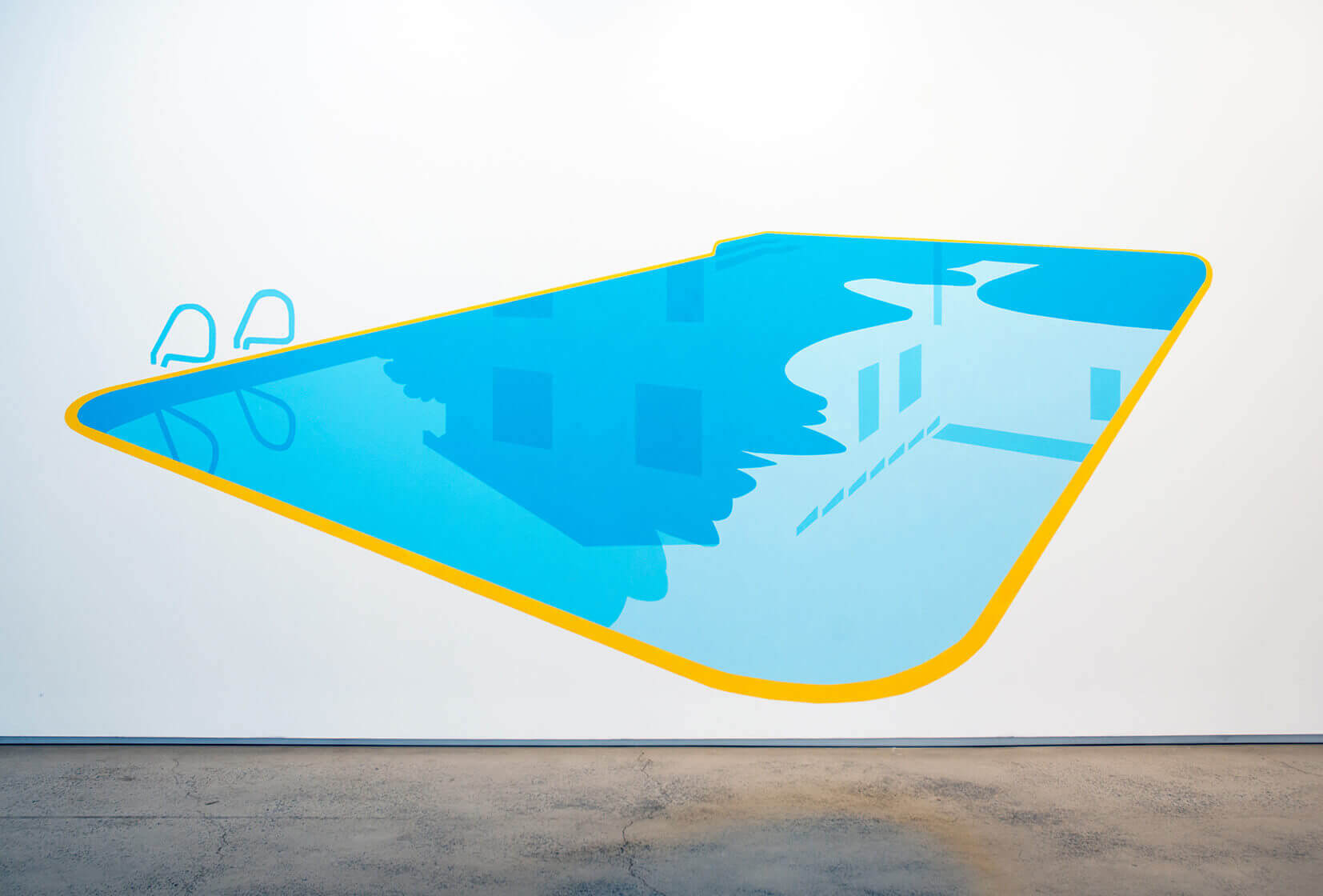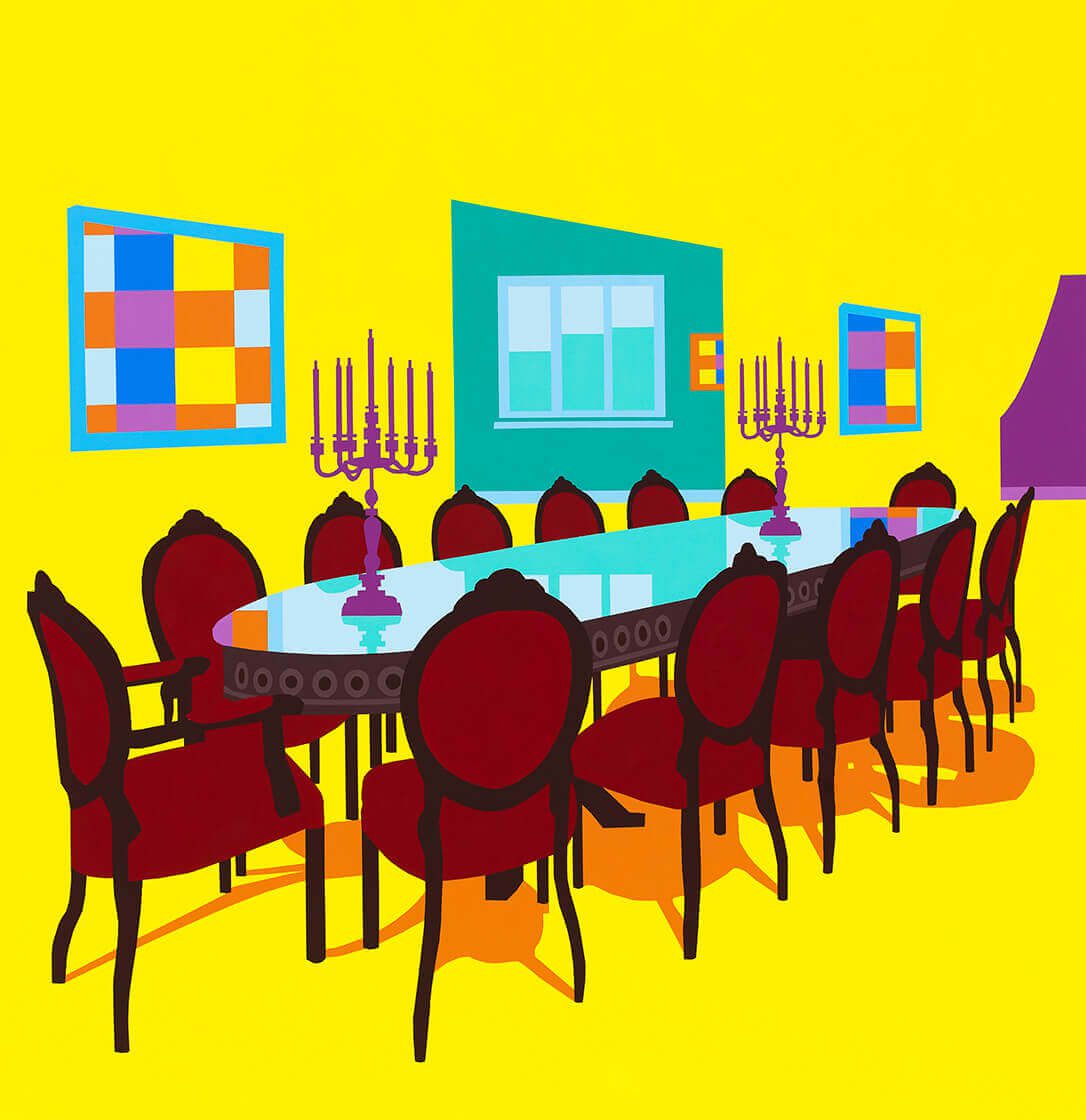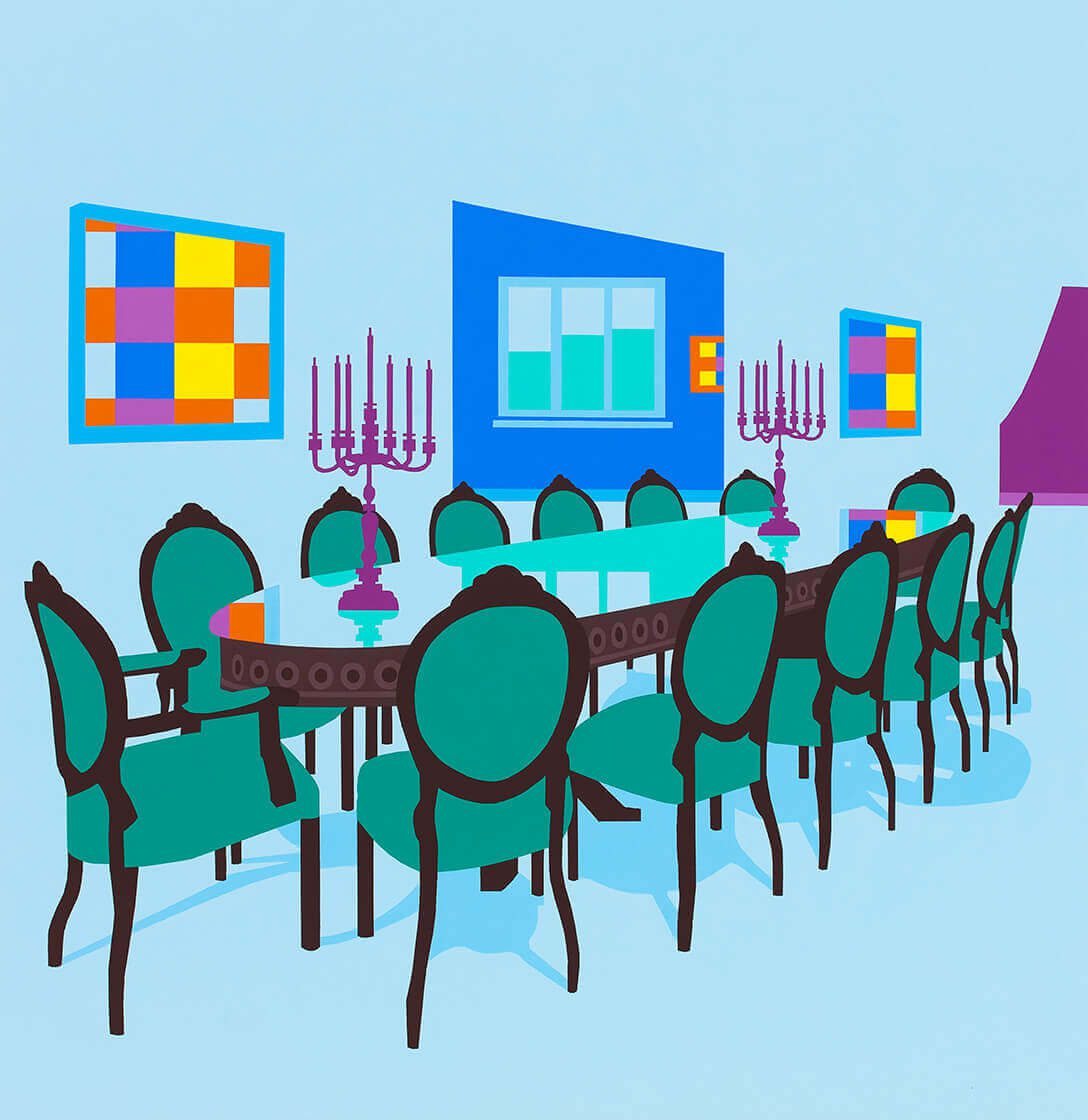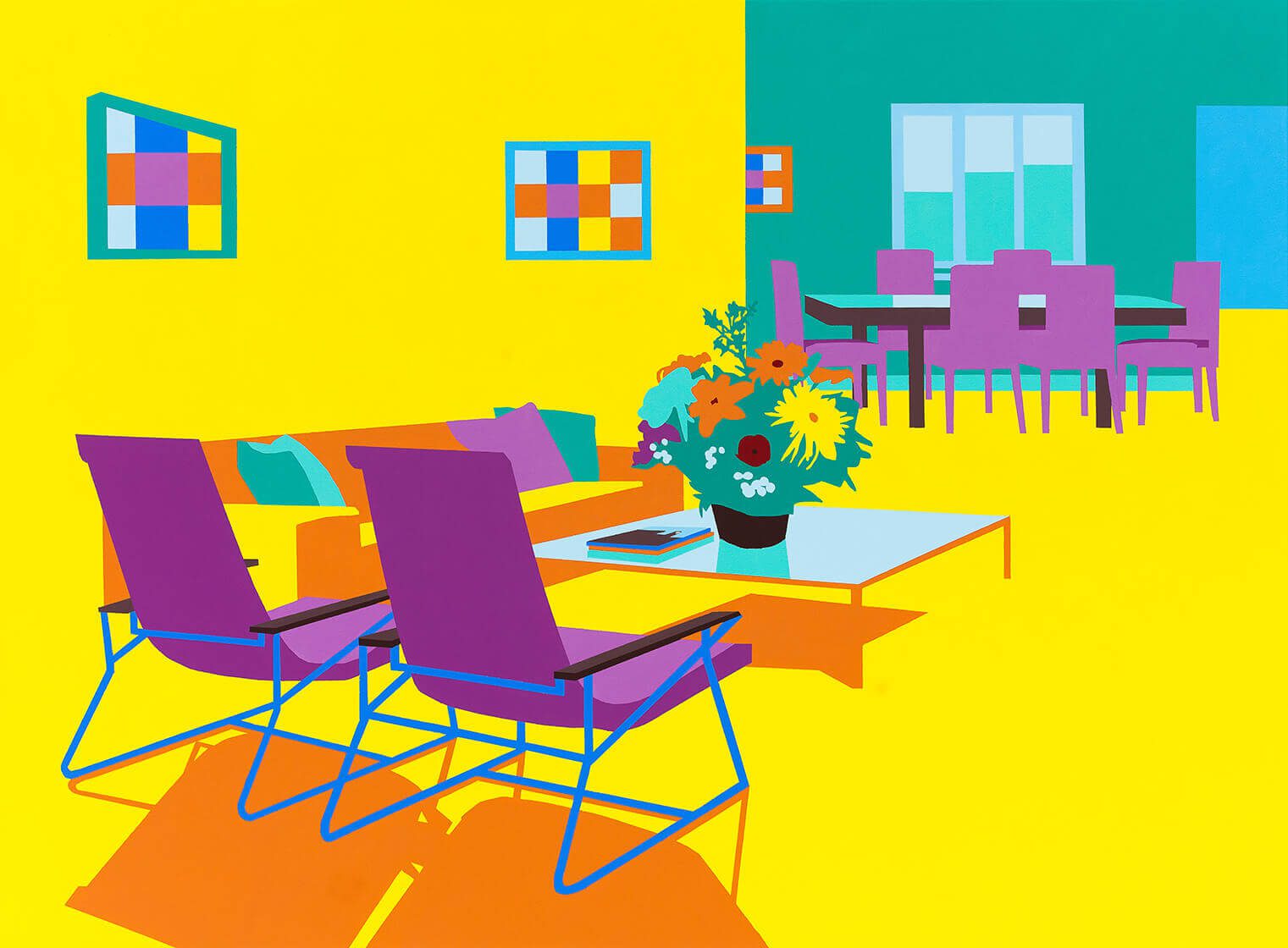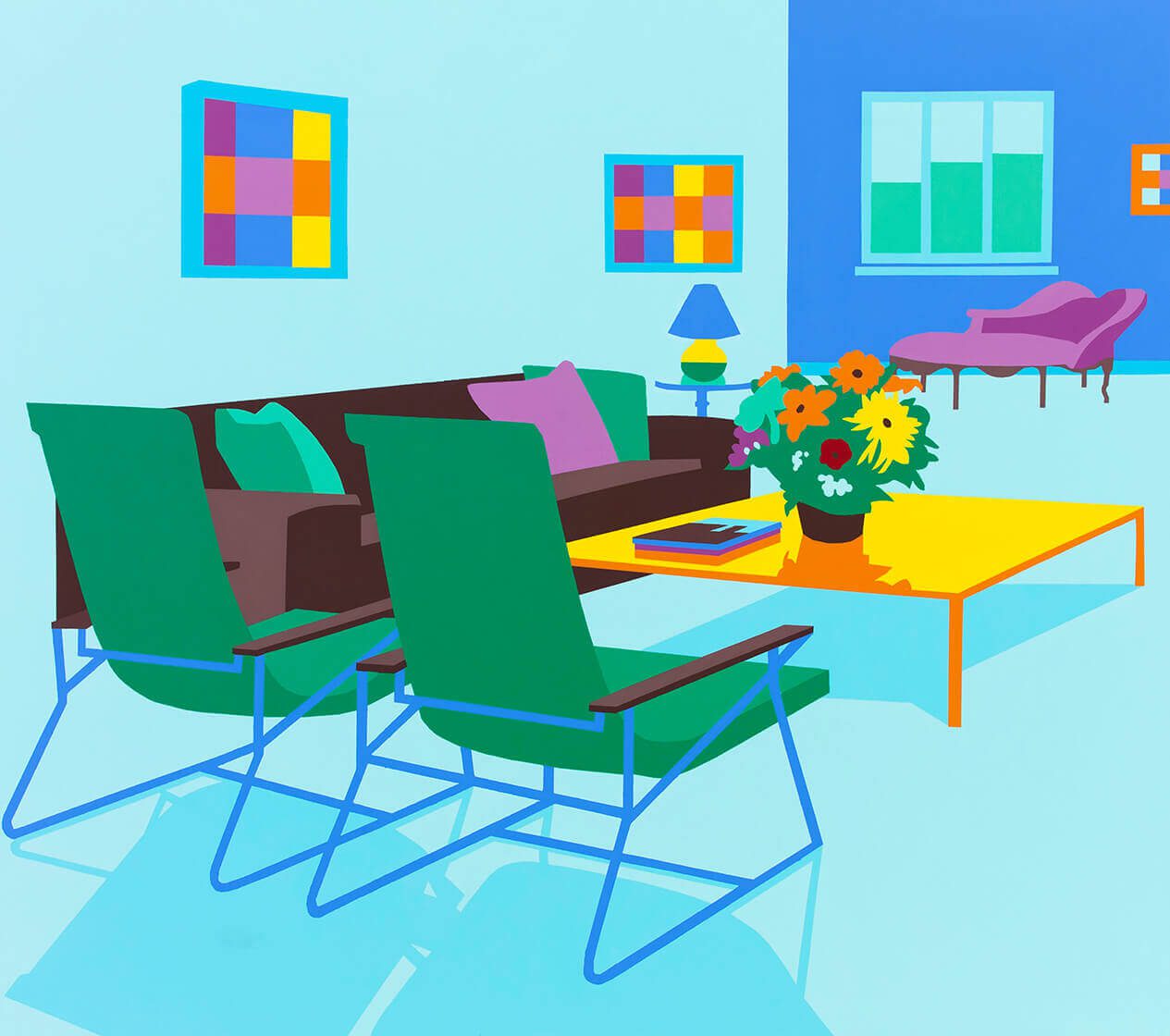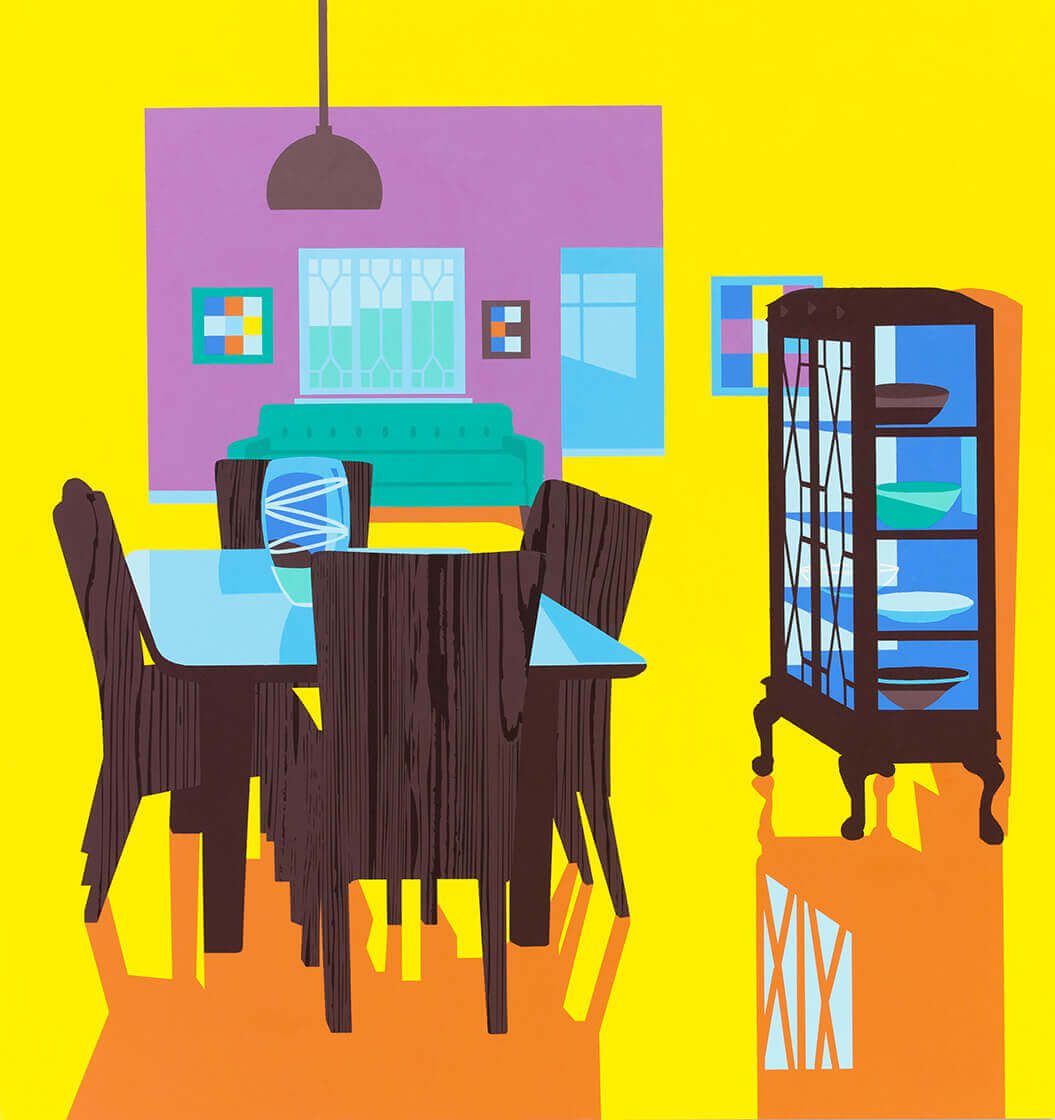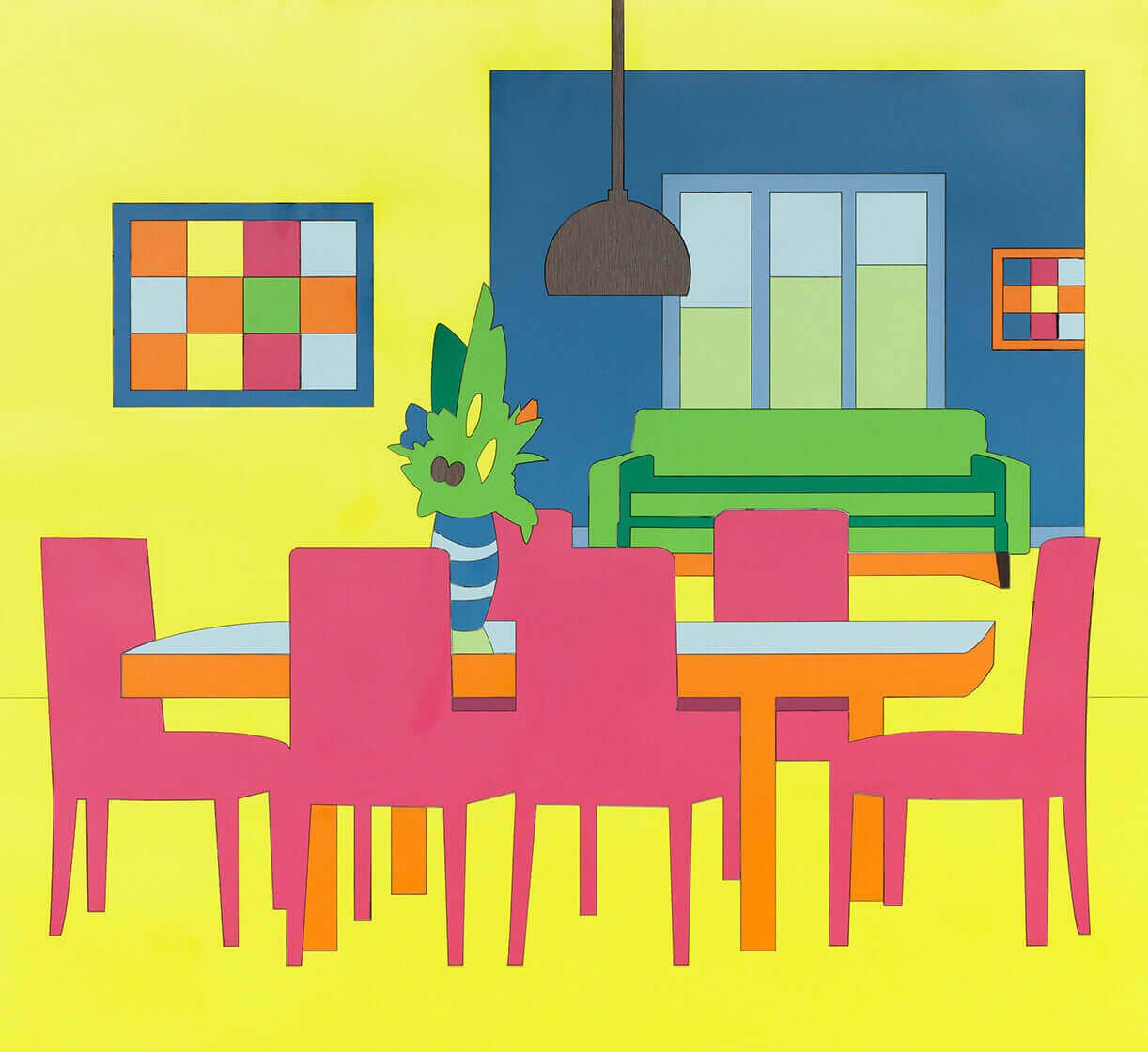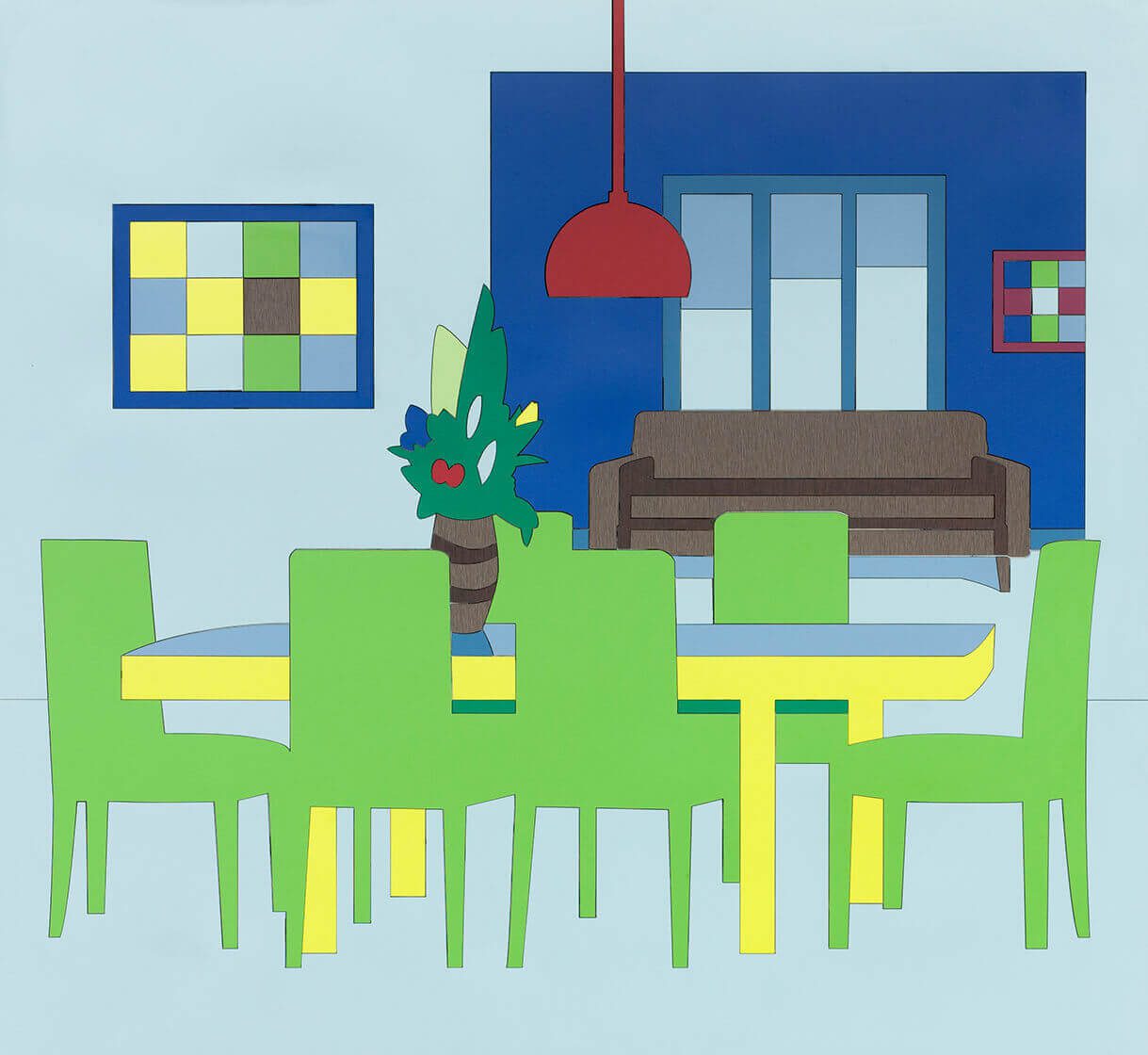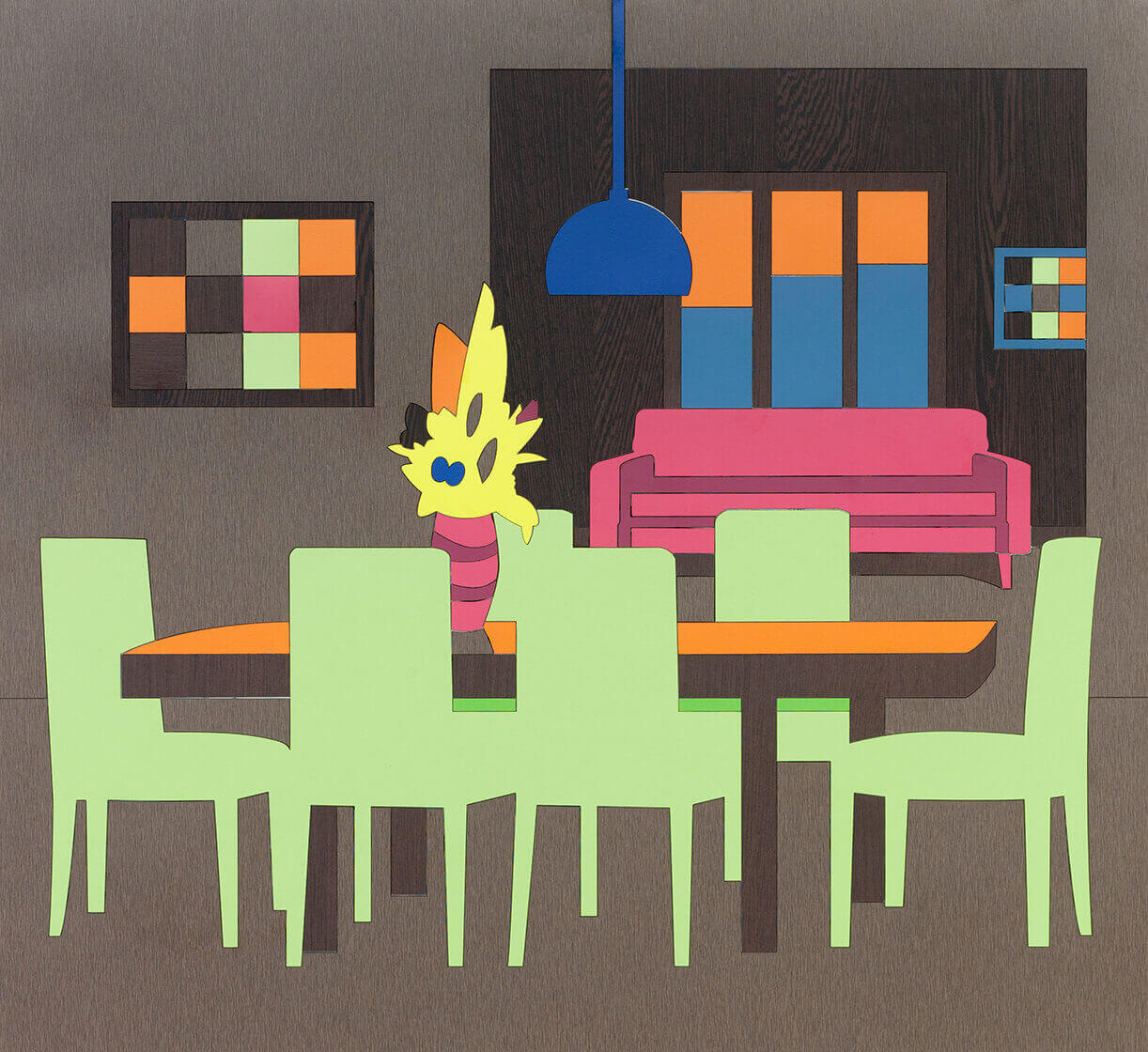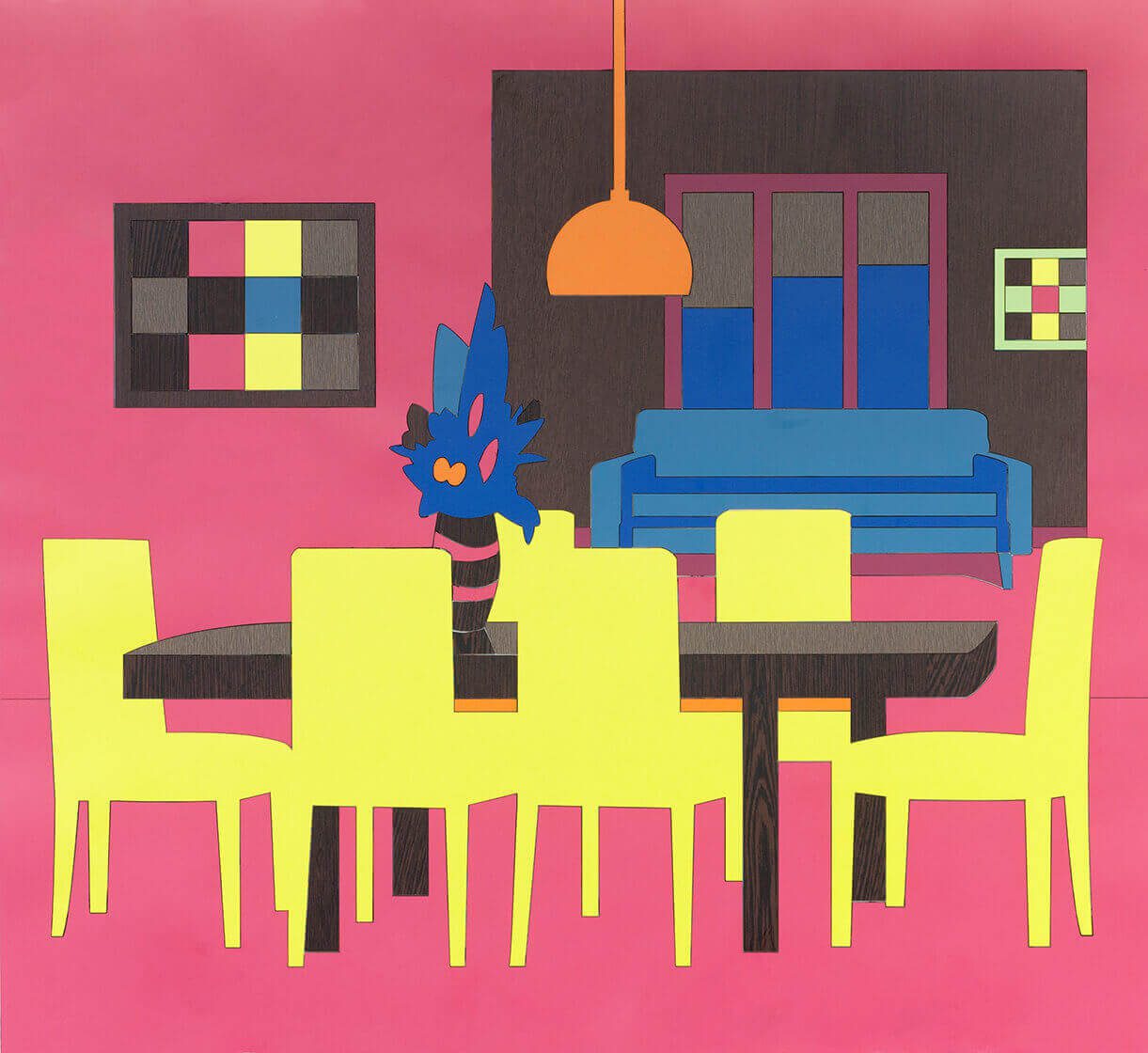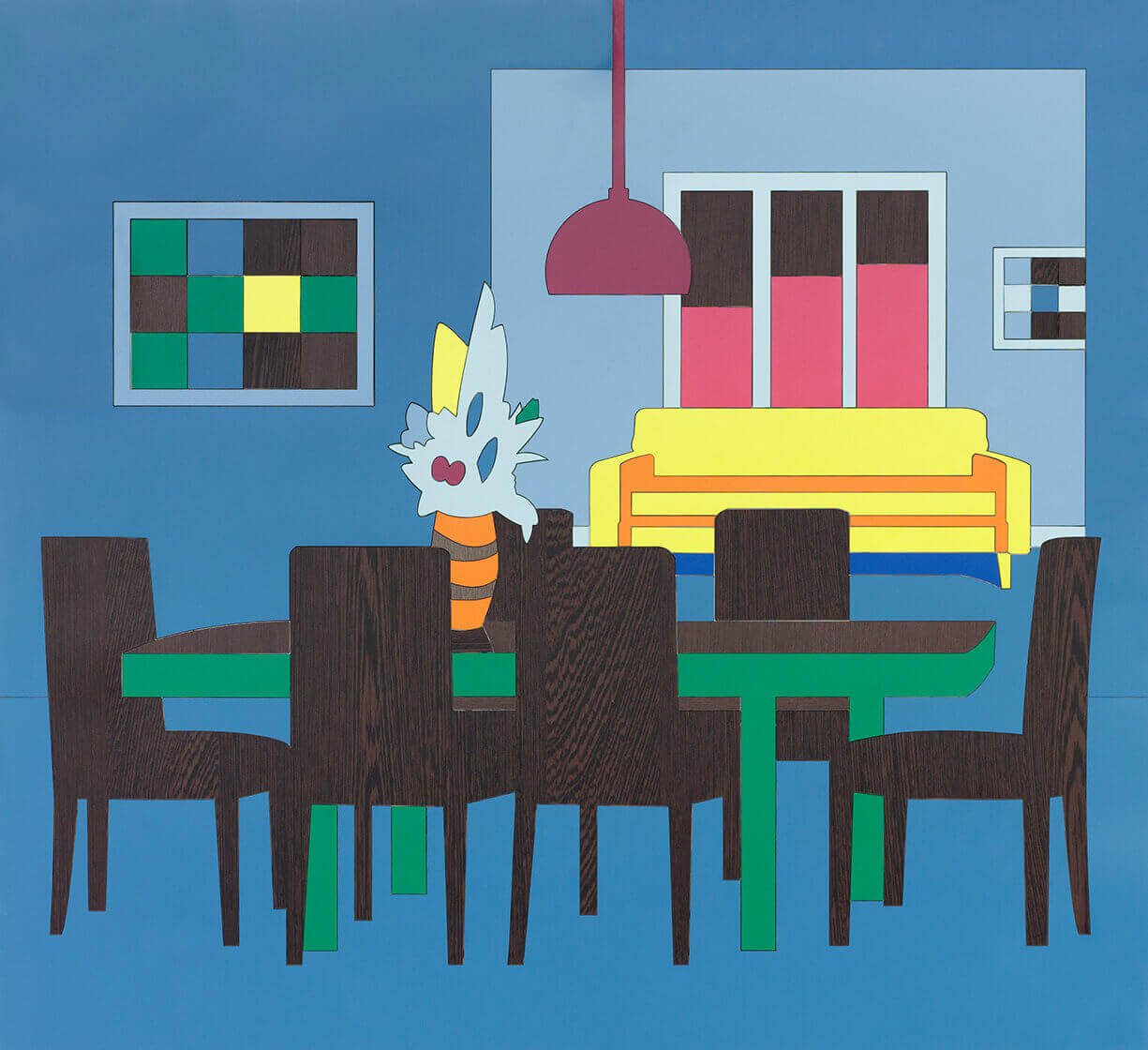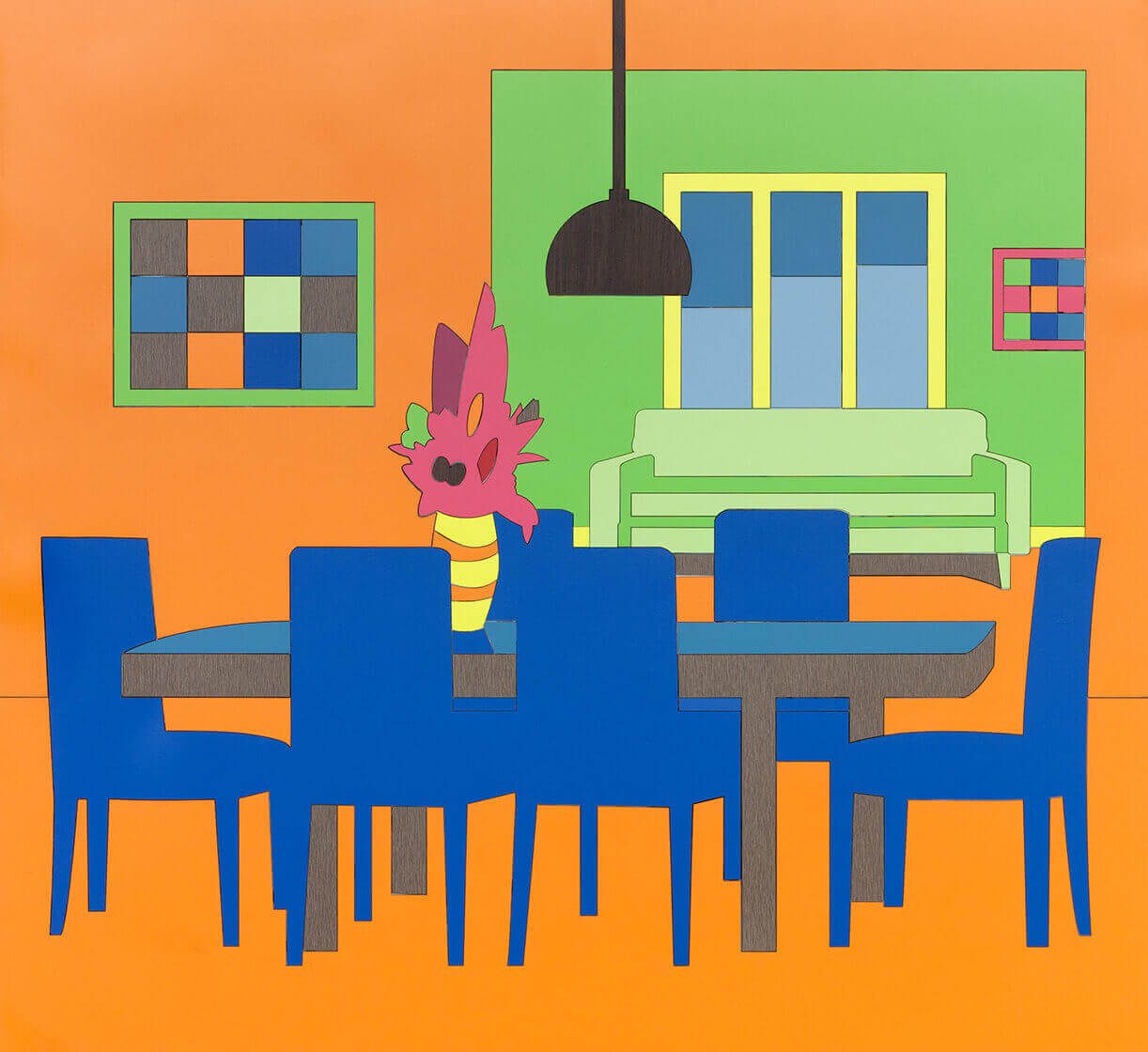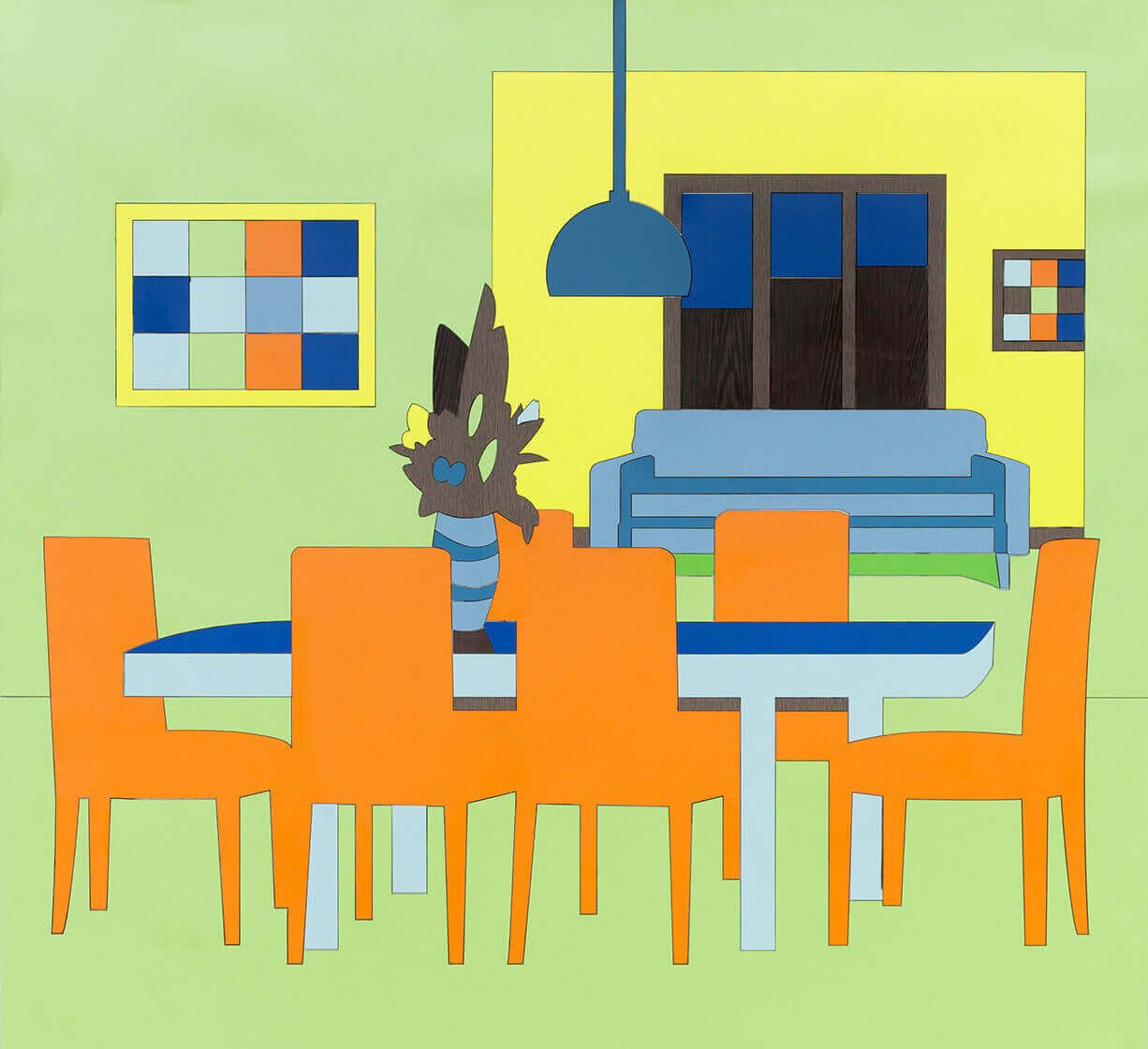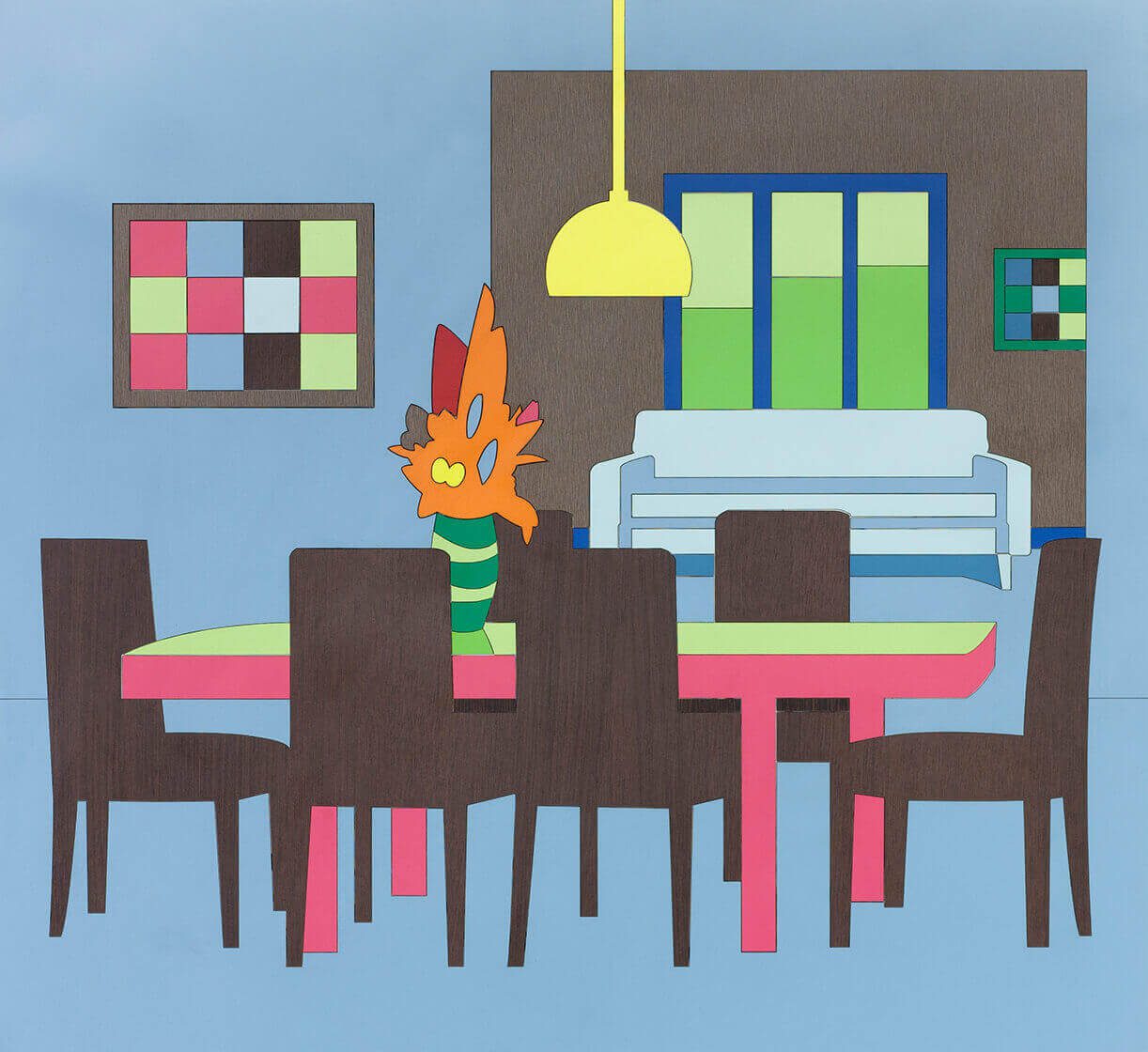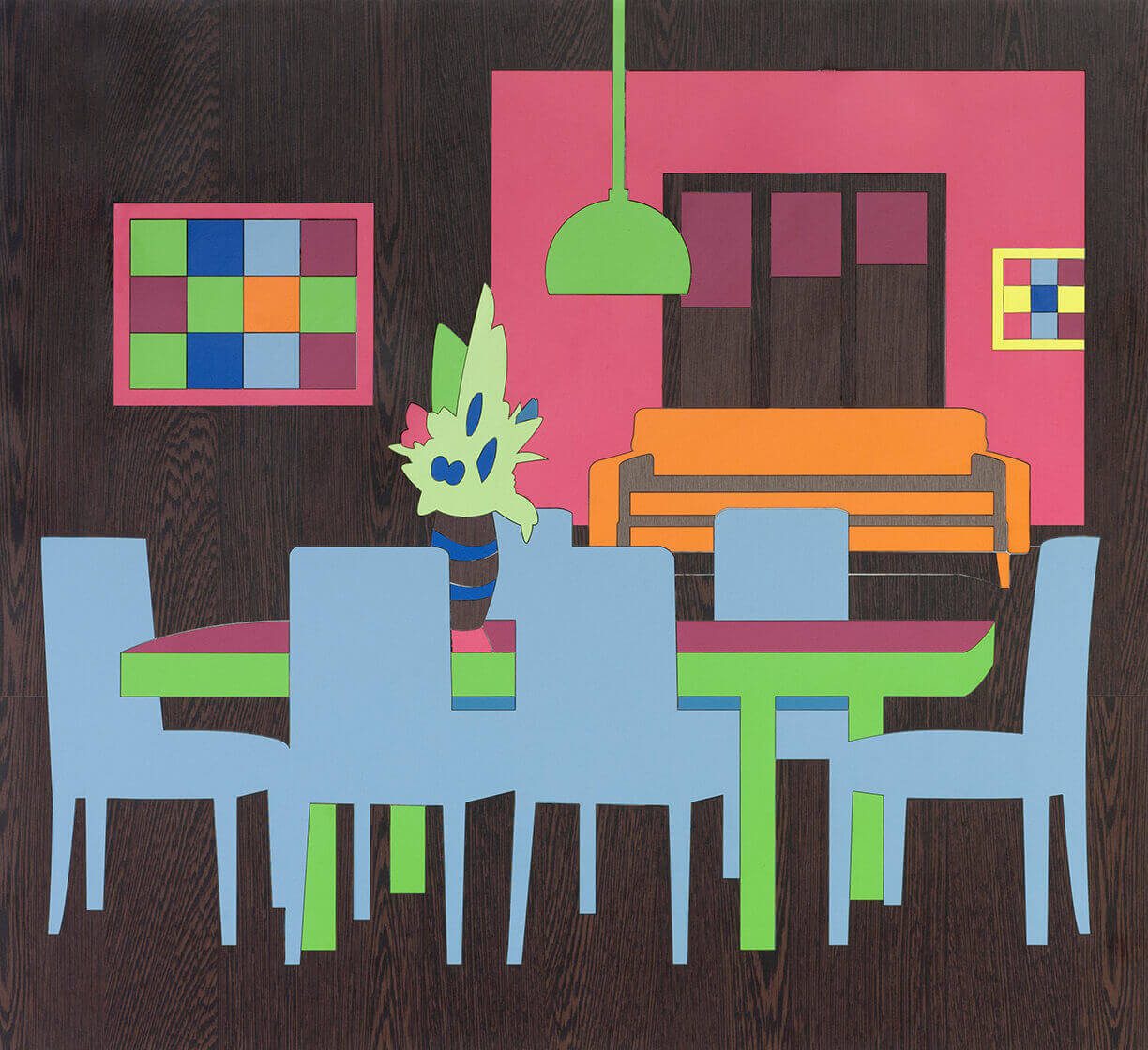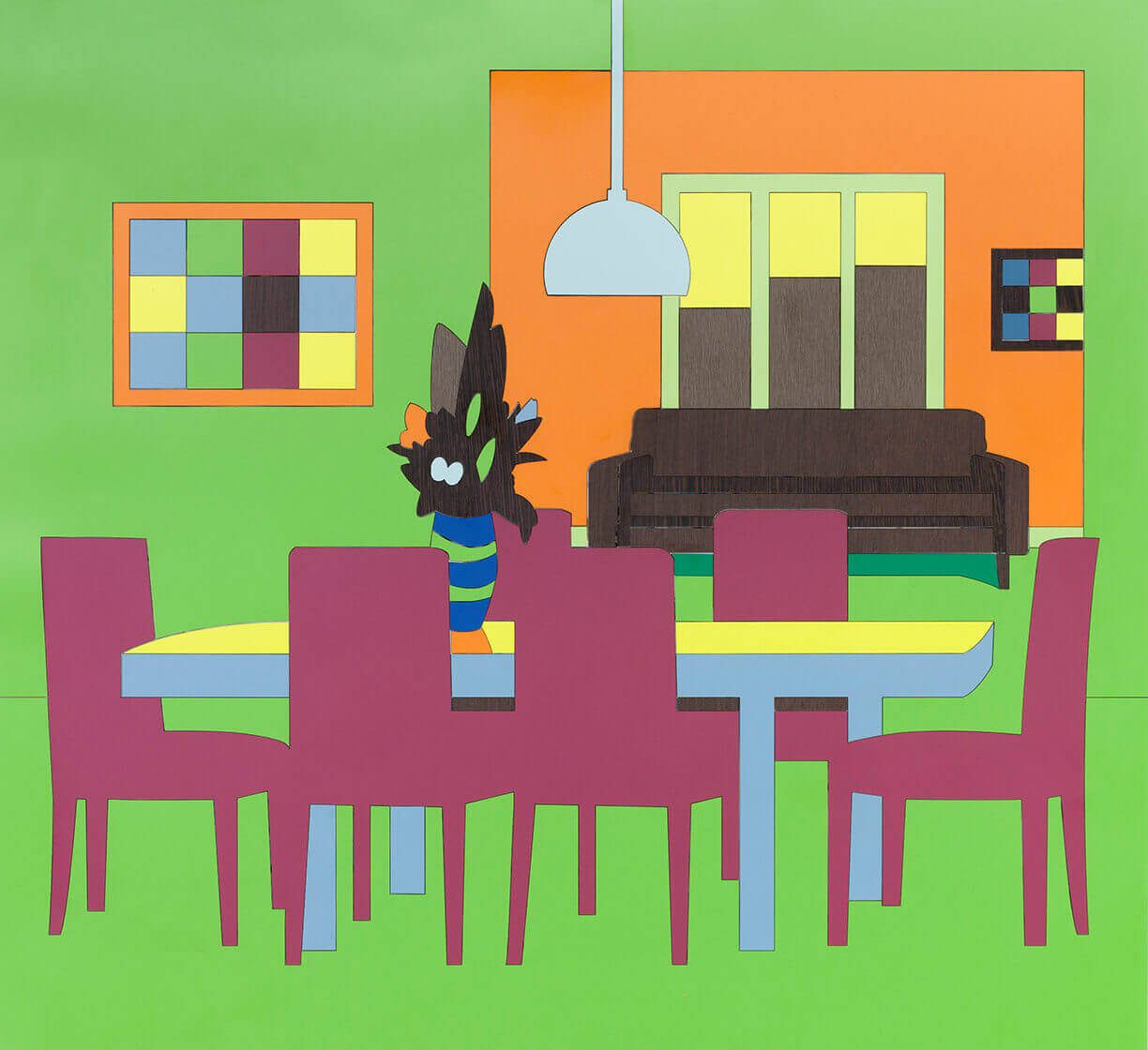15 Colour Series, June–July 2013, Sullivan + Strumpf
15 colours – Joanna Lamb’s new paintings–inside and out
Jenepher Duncan, June 2013
Joanna Lamb now has a room of her own. It’s a neatly converted garage attached to her home in the Perth suburbs and it’s big enough to store her paintings and support her intensive working process. When I first met her in 2005, she was crammed into a small dark upstairs studio as part of the Gotham Studios complex in Perth’s CBD. She was just starting to make paintings of suburban house exteriors using projected images and masking tape. The resulting series of urban buildings–houses, airports, high rise apartments and flats–were cool depictions of inertia and emptiness, their bland sameness modulated into pastel toned variations. They were far from the airbrushed pop portraits of suburban houses by Howard Arkley–rather, sparse evocations of compressed generic place.
Then in 2011, Lamb turned from housing exteriors to interiors, drawing on her own experiences of these spaces as well as images found on real estate advertising websites and magazines, which she reduces down to their bare essentials through electronic media processes.(1) Her mediated working approach involves ‘taking an image and simplifying it as much as possible to retain the most amount of information with the least amount of imagery’.(2) For those first interiors paintings of 2011, Lamb also used a set colour scheme to make her anonymous replicated rooms less personal, more like ‘vacant scenes of disquiet’.(3) It was a process partly influenced by making screenprints which she has made alongside her paintings since 2009.
With this show, as the title suggests, Lamb further reduced her colours to a choice of 15, as a way of trying to simplify things–as she remarked: ‘having one element as a given was one less thing to think about…(4) Instead, it made composition harder to resolve. Lamb’s systematic use of colour and reductive processes applied to found imagery compacts the graphic fastidiousness of her hard-edged, visual aesthetic. This is painting in the Twitter Age.
The interiors of the 15 colours series show are more visually upbeat than the previous 2011 series, with a palette of high-pitched, gaudy colours and more complex angular rooms, with walls, mirrors and windows askew and ambiguous about their visual cues. Collaged woodgrain laminate emphasises the flatness of her colour planes and introduces a representation of faux texture not seen in earlier works. Equally so, the woodgrain laminate is efficient as a quick way to change the image and sets up visual play between positive and negative space, to suggest different spatial scenarios. These paintings are not about representation or content but about carefully modulated excursions into flattened space and colour. It’s all about the physical act of making and the medium of the work and how to get to the point of abstracted expression.
Lamb’s interiors are now achieved through stencils, masked with airbrushing film, on composition hardboard–rather than through her earlier computer manipulated projections. Flattened simulated furniture fills the shallow interior spaces which read like theatre backdrops. These are not rooms for living in, but claustrophobic, stifling, refuting any notion of the comforts of home. For the bland figurative elements that make up Lamb’s paintings act only as a recognisable armature for the viewer to easily relate to and for her to play out the formal issues to do with the act of painting.(5) The few house exteriors included in this show feature a swimming pool, Lamb’s homage to David Hockney’s Los Angeles house and pool paintings which he started in the 1960s after emigrating there.(6)
Lamb’s visual lineage also includes the later paintings of Dale Hickey, with their flattening and blocking of form, space and colour, amongst other artists interested in treading the fine line between abstraction and figuration, like Arkley and Hockney. While her seamless acrylic paintings barely engage with pictorial space, there is some sense of perspective achieved by her manipulation of colour planes and blocks. As figurative abstractions, they remain true to their origins in advertising and graphic design. She has remarked: ‘I don’t think people take the time to stop and look at things because they are having to process so many images, so much information. That’s why it is important to me that my paintings are really flat.’(7)
Lamb’s use of a set structure was early evident through her 2005 paintings using the motif of common plastic milk crates, serially differentiated through colour. Since then, the momentum of her paintings has been towards more reduction, more complex image repetitions, with more intense colour schemes, culminating in these 15 colours works. This severely rationalist aesthetic is only countered by her what she calls her ‘intuitive approach to colour selection’ when she considers ‘colour contrast and tonal value to most effectively suggest multiple spatial scenarios’.(8) No colour appears in the same place twice and this strict methodology maintains the visual vitality of her serial compositions, an approach intended to make the exhibition ‘more experiential by forcing the viewer to focus on the whole concept rather than seeing one painting as separate from another.’(9)
Just as Lamb’s pared down compositional system serves both her pictorial interests and the practicalities of her domestic life, perhaps too, the focus on the home’s internal spaces reflects her interiorised and necessarily contained existence with two very young children. (10) So it is possible to observe that these two impulses, the personal and the formal, create platforms for the ‘room of (her) own’ to be expressed and inserted into the painted interiors. Reduction, restriction and repetition are key pictorial elements in Lamb’s exploration of the play of space, line and colour. But these paintings also suggest the artist’s wry social commentary alongside their formal explorations–for could Lamb also be using her rooms to observe the way fantasy advertising images of the home as commodity flatten, smooth out and restrain lives and living? The ‘little boxes’ that contain our lives. So her focus on these two lines of enquiry allows us to imagine all that is left out of these rooms–the lives that shuffle and animate them, that mess them up. Lamb’s intentions in these paintings are oblique and nuanced; like them, the room of her own has mirrors and windows and many colours.
Notes
(1) ‘The subject matter of the domestic interior/exterior is derived from my own experiences of these spaces and places as well as those represented in magazines and on the internet.’ Joanna Lamb, email to author, 4 April 2013.
(2) Joanna Lamb, email to author, 31 May, 2013.
(3) Joanna Lamb, ‘Interiors, Joanna Lamb’, Habitasliving.com,1 July, 2011
(4) Joanna Lamb, email to author, 31 May, op.cit.
(5) Joanna Lamb, ‘Interiors, Joanna Lamb’, Homelife, Inside Out 10 August, 2011.
(6) The 15 colours exhibition also features a large wall-based painting of a swimming pool, the template for which was executed in her kitchen.
(7) Joanna Lamb quoted in Catharine Munro, ‘Capturing the Viewer in the Everlasting Here and Now’, Sydney Morning Herald, 24 November 2009,
p. 13.
(8) Joanna Lamb, email to author, 4 April, 2013
(9) Joanna Lamb, 2009 and repeated 2013 (‘I also wanted to create an exhibition that was hopefully an experience and not just a group of independent works shown together’.) Email to author 31May, op.cit.
(10) Lamb has remarked that her painting approach became more ‘hard-edge’ with the birth of her first child. The artist quoted in Catharine Munro, ‘Capturing the Viewer in the Everlasting Here and Now’, 2009, op. cit.
